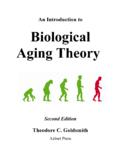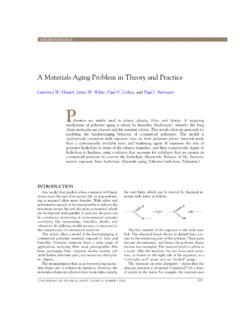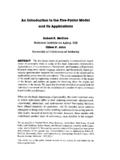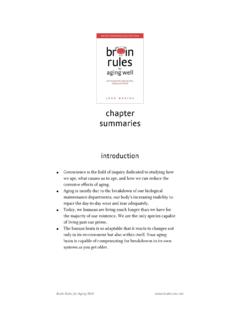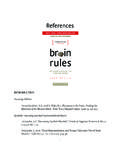Transcription of Anti-aging properties of resveratrol: review and report of ...
1 2 2008 Blackwell Publishing Journal of Cosmetic Dermatology , 7 , 2 7 Cosmetic Commentary Blackwell Publishing Inc COSMETIC COMMENTARY Anti-aging properties of resveratrol : review and report of a potent new antioxidant skin care formulation Richard A Baxter, MD 6100 219th St SW, Mountlake Terrace, WA 98043 Summary resveratrol , an antioxidant polyphenol from red wine, has been the subject of intenseinterest in recent years due to a range of unique Anti-aging properties . These include car-diovascular benefits via increased nitric oxide production, down-regulation of vasoactivepeptides, lowered levels of oxidized low-density lipoprotein, and cyclooxygenase inhibi-tion; possible benefits on Alzheimer s disease by breakdown of beta-amyloid and directeffects on neural tissues; phytohormonal actions; anticancer properties via modulationof signal transduction, which translates into anti -initiation, antipromotion, and anti -progression effects; antimicrobial effects; and sirtuin activation, which is believed to beinvolved in the caloric restriction-longevity effect.
2 Here we report a resveratrol -basedskin care formulation, with 17 times greater antioxidant activity than idebenone. Therole of resveratrol in prevention of photoaging is reviewed and compared with other anti -oxidants used in skin care products. Keywords : antiaging, antioxidant, nutraceuticals, polyphenols, resveratrol Introduction The ideal Anti-aging intervention should be applicablefor both cosmetic maintenance of an age-appropriatehealthful appearance, stemming the development ofdegenerative diseases, optimizing the function of the agingbrain and other tissues, and acting on biologic systemsknown to prolong lifespan. Although there is continuingdebate about defining Anti-aging , and whether there isindeed any true Anti-aging intervention, 1,2 there ismore of a consensus about what factors contribute tobiologic aging .
3 The oxidative theory 3 has gained scientificacceptance and considerable traction in the public smind, and antioxidants are a popular ingredient indietary and skin care products. Genetic factors playanother important but not overriding role, 4 andmodulation of genetic expression is another front inthe Anti-aging battle. 5 Caloric restriction remains theonly proven means of lifespan extension in the animalmodel and is believed to occur via up-regulation of anevolutionarily conserved class of enzymes known assirtuins, 6 involved in mitochondrial metabolism. Reportsin recent years that the caloric restriction effect could beelicited in progressively complex organisms via sirtuinactivation by the polyphenolic phytoalexin resveratrol 7 9 has generated considerable interest.
4 resveratrol hasbeen the subject of intensive investigation in recentyears (Fig. 1) and is reported to be an extremely potentantioxidant, a modulator of genetic expression via signaltransduction, an inhibitor of inflammatory mediators,and to have other actions including phyto-hormonaleffects. This combination of biological properties andcosmetic effects makes resveratrol a unique candidateanti- aging agent. Correspondence: Richard A Baxter, 6100 219th St. SW, Mountlake Terrace, WA 98043. E-mail: Accepted for publication November 4, 2007 Anti-aging properties of resveratrol R A Baxter 2008 Blackwell Publishing Journal of Cosmetic Dermatology , 7 , 2 7 3 resveratrol (3,5,4 -trihydroxystilbene) is a naturallyoccurring molecule found in high concentrations in manyred wines and is a member of a family of compoundsknown as wine polyphenols, which also includes flavo-noids.
5 10 Other sources of resveratrol include some coloredberries and the nonedible parts of the peanut plant. Ofthe two isoforms, the trans - resveratrol isomer is morestable and biologically active than the cis -resveratrolisomer. 11 resveratrol has been reported to be a stronginhibitor of NADPH- and adenosine 5 -diphosphate(ADP)-Fe + -lipid peroxidation and ultraviolet (UV) light induced lipid peroxidation, and an efficient scavenger of2,2 -azobis-(2-amidinopropane)-dihydrochlori de peroxylradicals. 12 Several studies have evaluated the structure-activity relationship of resveratrol and other stilbenederivatives. Olas and Wachowicz 13 evaluated the activitiesof resveratrol in platelets and determined that thehydroxyl group in ring B was important in the inhibitionof the production of reactive oxygen species, reduction oflipid peroxidation, and protection against peroxynitrate-induced platelet lipid and protein oxidation.
6 Stojanovic et al . 14 also found resveratrol to be an extremely efficientfree radical scavenger in a model employing gamma-irradiation of liposomes, with the para-hydroxyl con-figuration the most effective. resveratrol was 95% efficientat preventing lipid peroxidation, compared with ~65%for vitamin E and ~37% for vitamin C. Flavonoid poly-phenols are more ubiquitous. Silymarin, derived fromthe milk thistle plant, has been found to share someproperties with resveratrol , including an antiapoptoticeffect following UV radiation, modulation of signal trans-duction, and sirtuin activation. 15 Topical and systemicadministration of silymarin was shown to attenuateburn-induced oxidative tissue injury in rats 16 and isbeing evaluated for chemoprevention of prostate and skincancers. 17 Direct comparisons of silymarin s antioxidantcapacity with other polyphenols has not been reported,however, and this compound has not been extensivelystudied.
7 Cardiovascular The inverse relationship between wine consumption andheart disease ( French paradox ) has been known for sometime and well documented. 18 20 resveratrol and otherwine phenolics are believed to be largely responsible forthis correlation via increased nitric oxide production, 21 down-regulation of vasoactive peptides known as endo-thelins, 22 reduction of oxidized low-density lipoprotein, 23 and anti -inflammatory effects via cyclooxygenase (COX)inhibition and down-regulation of eicosanoid synthesis. 24 Brain function Population studies reveal a consistent inverse relation-ship of moderate wine consumption and Alzheimer s/senile dementia as well as overall better maintenance ofcognitive ability with advancing age. 25 resveratrol hasbeen shown to facilitate the breakdown of beta-amyloid,which is associated with Alzheimer s disease, via specificmechanisms unrelated to antioxidant effects, 26 and toprotect against beta-amyloid toxicity in vitro.
8 27 Mitogen-activated protein enzymes (MAP kinases), which areactive in learning and memory centers of the brain, areup-regulated by resveratrol in neural tissues. 28 NeuronalAMP kinases are also activated by resveratrol . 29 Figure 1 PubMed citations for resveratrol as a function of year. Anti-aging properties of resveratrol R A Baxter 4 2008 Blackwell Publishing Journal of Cosmetic Dermatology , 7 , 2 7 resveratrol has also been shown to protect the brainagainst the effects of traumatic injury in a rat model. 30 Ina gerbil stroke model, resveratrol administered eitherduring or after carotid artery occlusion significantlydecreased cerebral ischemic injury. 31 This same studydocumented the ability of resveratrol to traverse theblood brain barrier. Phyto-hormonal effects resveratrol is known to bind the estrogen receptor, 32 andevidence suggests that regular wine consumptionattenuates perimenopausal symptoms 33 and protectsagainst osteoporosis.
9 A report from China MedicalUniversity in Taiwan 34 concluded that resveratrol s bone-protective effects were similar to hormone replacementtherapy (HRT), without increased risk of breast cancer,via signal-transduction mediated effects resulting inactivation of forkhead proteins, which were also involvedin anticancer effects. Given current controversies aboutHRT following the Women s Health Initiative report , 35 this may prove extremely valuable, but remains to beclinically documented in prospective are being investigated as possibleselective cytoplasmic and membrane surface estrogenreceptor agonists to slow skin aging without the potentialrisks of estrogen. 36 Estrogen is known to enhance dermalwater-holding capacity, increase glycosaminoglycancontent, maintain skin elasticity and collagen content, anddiminish wrinkling, although specific data on stilbenephytestrogens such as resveratrol are lacking.
10 37 Antioxidant Wine polyphenols as a class are the most potent dietaryantioxidants, generally many times greater than vitaminsA, C, and E. Large trials of vitamin supplementationhave consistently found no reduction in the incidence ofdegenerative diseases. 38 40 Dietary intervention studieshave documented a reduction of serum oxidative damagemarkers to a greater degree with the addition of red winecompared with vegetables rich in antioxidant representative study from the Catholic University ofChile in Santiago compared total plasma antioxidantcapacity, levels of leukocyte DNA 8-OHdeoxyguanosine(8 OHdG, a marker for DNA oxidation), and plasma7C-hydroxycholesterol, in groups of volunteers givenan occidental (high-fat) diet, a Mediterranean diet, or aMediterranean diet supplemented isocalorically witheither red wine or additional fruits and vegetables, for 3months.
